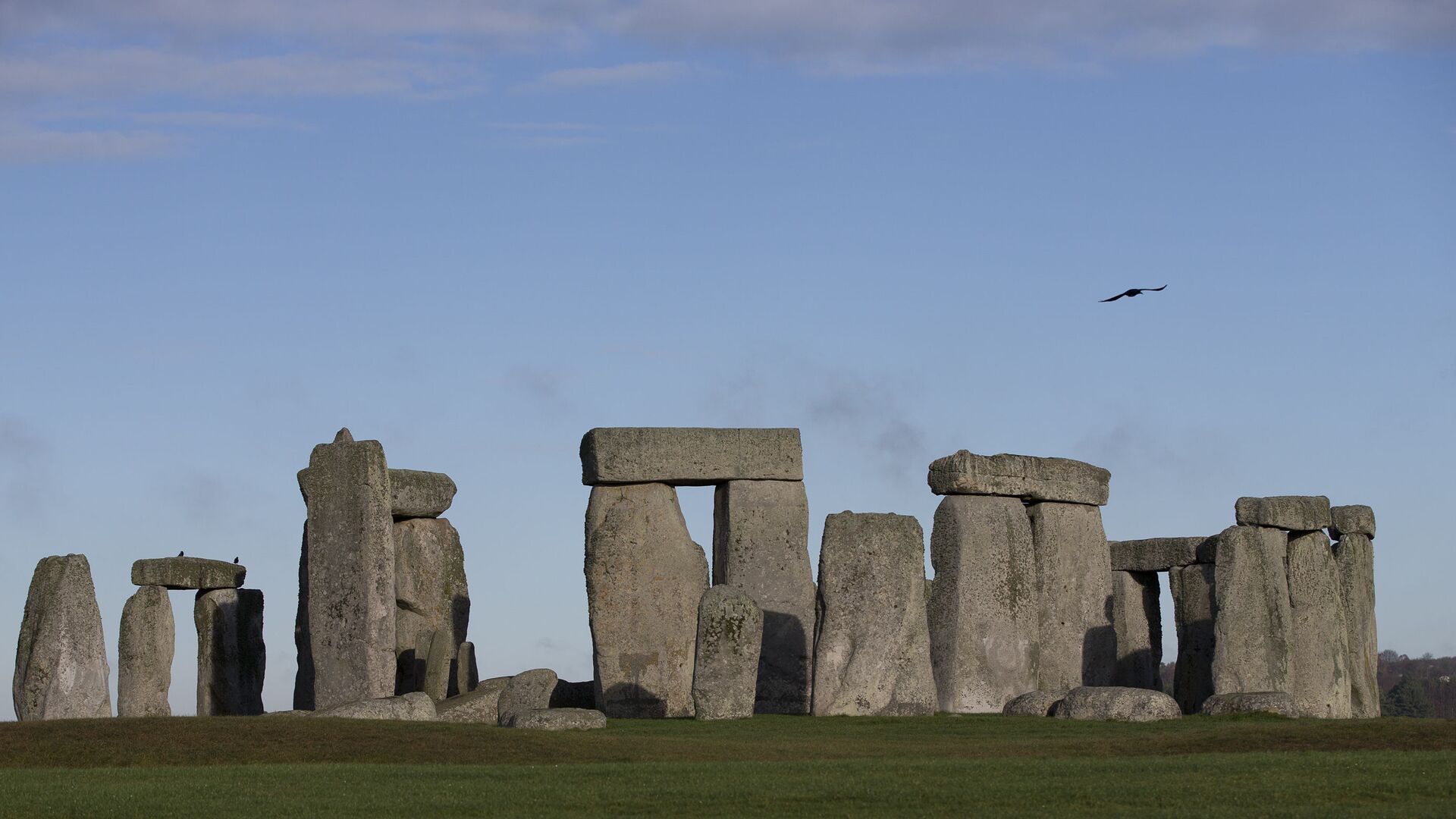https://sputnikglobe.com/20220302/scientist-claims-he-finally-discovered-real-purpose-of-iconic-stonehenge-1093525628.html
Scientist Claims He Finally Discovered Real Purpose of Iconic Stonehenge
Scientist Claims He Finally Discovered Real Purpose of Iconic Stonehenge
Sputnik International
The stone circle monument built between 3000 and 1520 BC has for decades puzzled archaeologists. One of the biggest mysteries is Stonehenge’s purpose. Some researchers suggested that it was a religious site, others that it was meant to honour the predecessors.
2022-03-02T15:23+0000
2022-03-02T15:23+0000
2022-08-06T13:32+0000
science & tech
stonehenge
summer solstice
calendar
https://cdn1.img.sputnikglobe.com/img/07e5/08/11/1083633145_194:0:2953:1552_1920x0_80_0_0_6e33220262ca6820f3bc45001dc05aab.jpg
Professor Timothy Darvill from Bournemouth University in the UK claims he has cracked the puzzle of Stonehenge and knows the meaning of the circle monument. Mr Darvill alleges it was built as a giant solar calendar that may link the United Kingdom to Ancient Egypt.Scientists knew that the monument was built in the direction of the sunrise of the summer solstice and the sunset of the winter solstice. Professor Darvill analysed the stones and then compared them to other stone calendars from this period.He came to the conclusion that the monument was a calendar "based on a tropical solar year of 365.25 days". Each of the 30 stones in the sarsen circle represents a day within a month, itself divided into three weeks each of 10 days, the researcher said.
Sputnik International
feedback@sputniknews.com
+74956456601
MIA „Rossiya Segodnya“
2022
Sputnik International
feedback@sputniknews.com
+74956456601
MIA „Rossiya Segodnya“
News
en_EN
Sputnik International
feedback@sputniknews.com
+74956456601
MIA „Rossiya Segodnya“
Sputnik International
feedback@sputniknews.com
+74956456601
MIA „Rossiya Segodnya“
the mystery of stonehenge, scientists claims, professor timothy darvill, from bournemouth university
the mystery of stonehenge, scientists claims, professor timothy darvill, from bournemouth university
Scientist Claims He Finally Discovered Real Purpose of Iconic Stonehenge
15:23 GMT 02.03.2022 (Updated: 13:32 GMT 06.08.2022) The stone circle monument, built between 3000 and 1520 BC, has for decades puzzled archaeologists. One of the biggest mysteries is Stonehenge’s purpose. Some researchers have suggested that it was a religious site, while others have claimed that it was built to honour ancestors.
Professor Timothy Darvill from Bournemouth University in the UK claims he has cracked the puzzle of
Stonehenge and knows the meaning of the circle monument. Mr Darvill alleges it was built as a giant solar calendar that may link the United Kingdom to Ancient Egypt.
Scientists knew that the monument was built in the direction of the sunrise of the summer solstice and the sunset of the winter solstice. Professor Darvill analysed
the stones and then compared them to other stone calendars from this period.
He came to the conclusion that the monument was a calendar "based on a tropical solar year of 365.25 days". Each of the 30 stones in the sarsen circle represents a day within a month, itself divided into three weeks each of 10 days, the researcher said.
"Such a solar calendar was developed in the eastern Mediterranean in the centuries after 3000 BC and was adopted in Egypt as the Civil Calendar around 2700 BC and was widely used at the start of the Old Kingdom about 2600 BC", he said, adding that creators of Stonehenge were influenced by other cultures.

